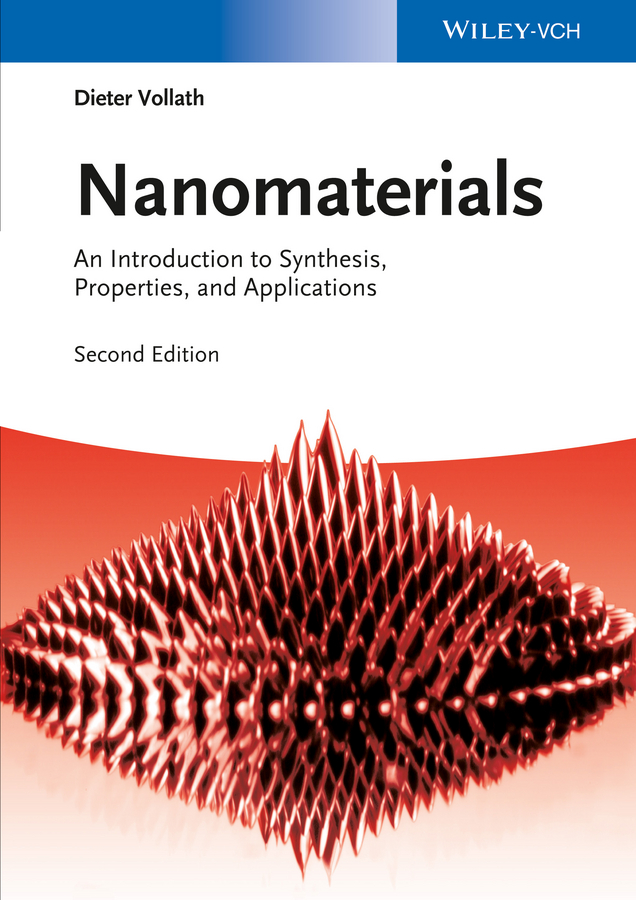
Successor of the highly acclaimed, first full–color introduction to nanomaterials – now including graphenes and carbon nanotubes This full–colored introduction to nanomaterials and nanotechnology in particular addresses the needs of engineers who need to know the special phenomena and potentials, without getting bogged down in the scientific detail of the physics and chemistry involved. Based on the author?s own courses, this textbook shows how to produce nanomaterials and use them in engineering applications for novel products. Following an introduction, the text goes on to treat synthesis, characterization techniques, thermal, optical, magnetic and electronic properties, processing and, finally, emerging applications. A sound overview of the nano world from an application–oriented perspective. Reviews for the first edition: The reader [of this book] profits from the broad scientific teaching experience of the author.... This book is highly recommended for everyone who wants to step onto the new and fascinating field of nanomaterials. (International Journal of Materials Research, May 2009) The practical presentation and clarity in writing style makes this book a winner for anyone wanting to quickly learn about the fundamentals and practical side of nanomaterials. (IEEE Electrical Insulation Magazine, March/April 2009) INDICE: Preface IX 1 Nanomaterials: An Introduction 1 2 Nanomaterials and Nanocomposites 5 2.1 Introduction 5 2.2 Elementary Consequences of Small Particle Size 12 2.2.1 Surface of Nanoparticles 12 2.2.2 Thermal Phenomena 13 2.2.3 Diffusion Scaling Law 14 2.2.4 Scaling of Vibrations 20 References 22 3 Surfaces in Nanomaterials 23 3.1 General Considerations 23 3.2 Surface Energy 25 3.3 Some Technical Consequences of Surface Energy 36 References 42 4 Gas–Phase Synthesis of Nanoparticles 45 4.1 Fundamental Considerations 45 4.2 Inert Gas Condensation Process 56 4.3 Physical and Chemical Vapor Synthesis Processes 57 4.4 Laser Ablation Process 60 4.5 Radio– and Microwave Plasma Processes 64 4.6 Flame Aerosol Process 72 4.7 Synthesis of Coated Particles 82 References 87 5 Nanotubes, Nanorods, and Nanoplates 89 5.1 General Considerations 89 5.1.1 Conditions for the Formation of Rods and Plates 93 5.1.2 Layered Structures 94 5.1.3 One–Dimensional Crystals 95 5.2 Nanostructures Related to Compounds with Layered Structures 98 5.2.1 Carbon Nanotubes and Graphene 98 5.2.2 Nanotubes and Nanorods from Materials other than Carbon 109 5.2.3 Synthesis of Nanotubes and Nanorods 113 References 120 6 Nanofluids 123 6.1 Definition 123 6.2 Nanofluids for Improved Heat Transfer 123 6.3 Ferrofluids 127 6.3.1 General Considerations 127 6.3.2 Properties of Ferrofluids 127 6.3.3 Applications of Ferrofluids 129 References 133 7 Phase Transformations of Nanoparticles 135 7.1 Thermodynamics of Nanoparticles 135 7.2 Heat Capacity of Nanoparticles 136 7.3 Phase Transformations of Nanoparticles 139 7.4 Phase Transformation and Coagulation 148 7.5 Structures of Nanoparticles 149 7.6 A Closer Look at Nanoparticle Melting 153 7.7 Structural Fluctuations 159 References 165 8 Magnetic Properties of Nanoparticles 167 8.1 Magnetic Materials 167 8.2 Superparamagnetic Materials 171 8.3 Susceptibility and Related Phenomena in Superparamagnets 184 8.4 Applications of Superparamagnetic Materials 191 8.5 Exchange–Coupled Magnetic Nanoparticles 196 References 203 9 Optical Properties of Nanoparticles 205 9.1 General Remarks 205 9.2 Adjustment of the Index of Refraction 205 9.3 Optical Properties Related to Quantum Confinement 209 9.4 Quantum Dots and Other Lumophores 223 9.5 Metallic and Semiconducting Nanoparticles Isolated and in Transparent Matrices 231 9.6 Special Luminescent Nanocomposites 243 9.7 Electroluminescence 250 9.8 Photochromic and Electrochromic Materials 257 9.8.1 General Considerations 257 9.8.2 Photochromic Materials 257 9.8.3 Electrochromic Materials 259 9.9 Materials for Combined Magnetic and Optic Applications 261 References 267 10 Electrical Properties of Nanoparticles 269 10.1 Fundamentals of Electrical Conductivity in Nanotubes and Nanorods 269 10.2 Nanotubes 278 10.3 Photoconductivity of Nanorods 284 10.4 Electrical Conductivity of Nanocomposites 288 References 296 11 Mechanical Properties of Nanoparticles 299 11.1 General Considerations 299 11.2 Bulk Metallic and Ceramic Materials 302 11.2.1 Influence of Porosity 302 11.2.2 Influence of Grain Size 304 11.2.3 Superplasticity 317 11.3 Filled Polymer Composites 319 11.3.1 Particle–Filled Polymers 319 11.3.2 Polymer–Based Nanocomposites Filled with Platelets 323 11.3.3 Carbon Nanotube– and Graphene–Based Composites 329 References 333 12 Characterization of Nanomaterials 335 12.1 General Remarks 335 12.2 Global Methods for Characterization 335 12.2.1 Specific Surface Area 335 12.3 X–Ray and Electron Diffraction 341 12.4 Electron Microscopy 349 12.4.1 General Considerations 349 12.4.2 Interaction of the Electron Beam and Specimen 353 12.4.3 Localized Chemical Analysis in the Electron Microscope 358 12.4.4 Scanning Transmission Electron Microscopy Using a High–Angle Annular Dark–Field Detector 365 References 367 Index 369
- ISBN: 978-3-527-33379-0
- Editorial: Wiley VCH
- Encuadernacion: Rústica
- Páginas: 386
- Fecha Publicación: 14/08/2013
- Nº Volúmenes: 1
- Idioma: Inglés
